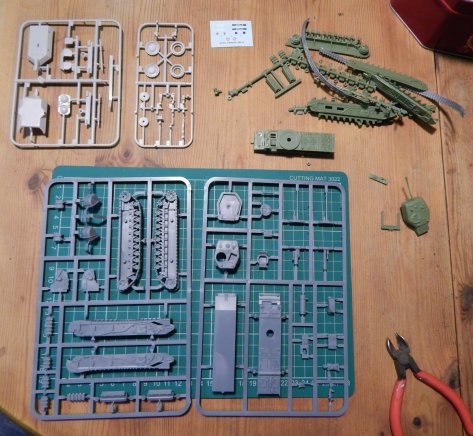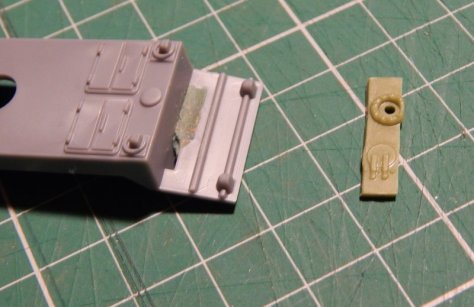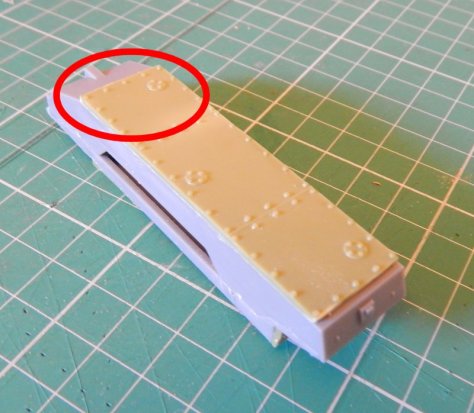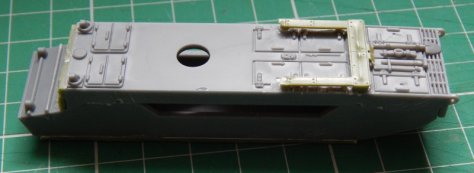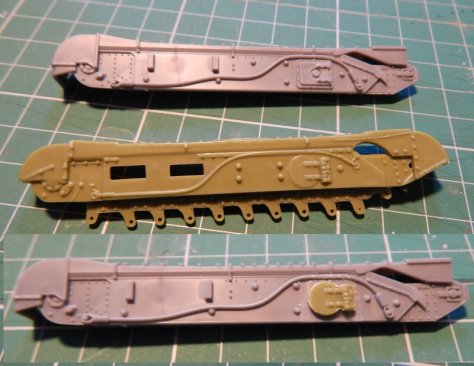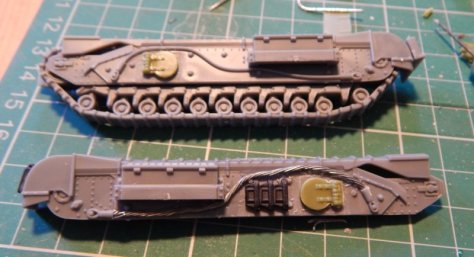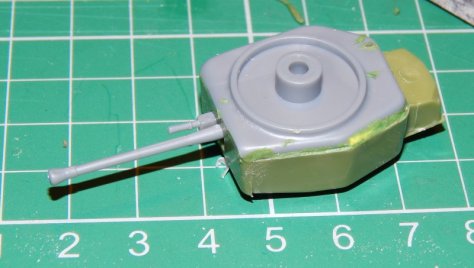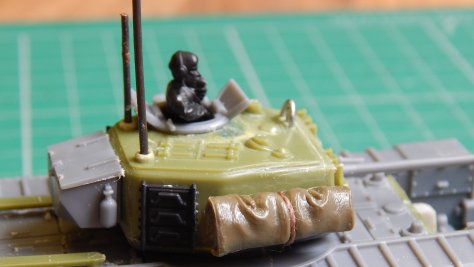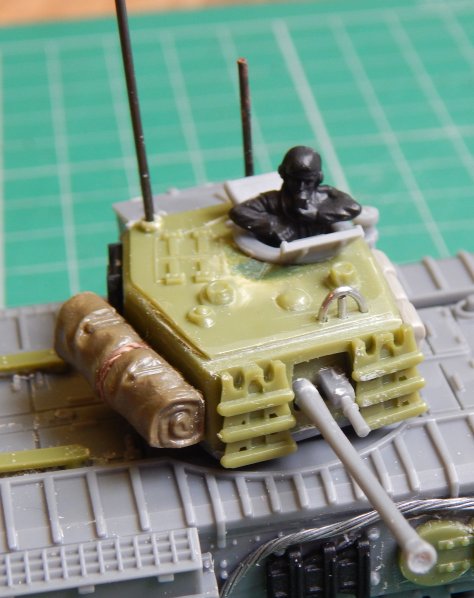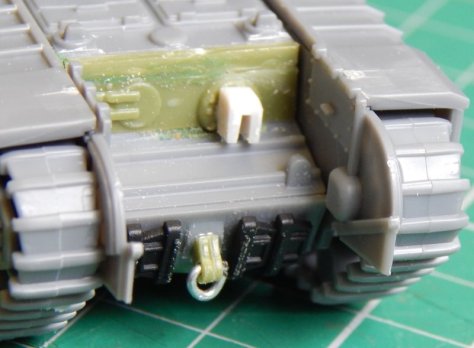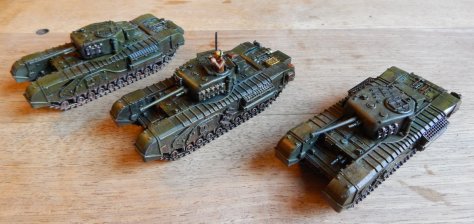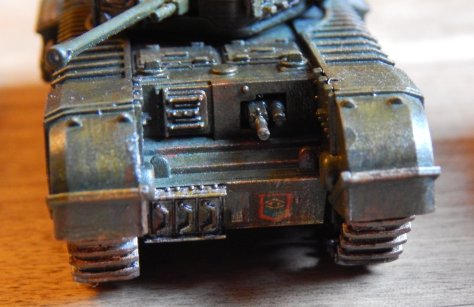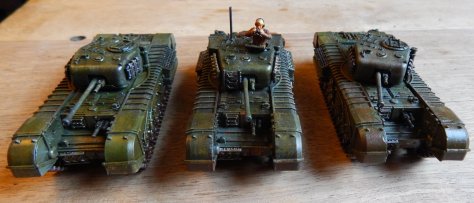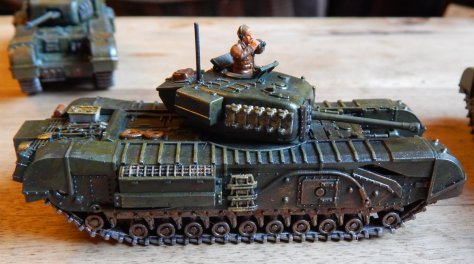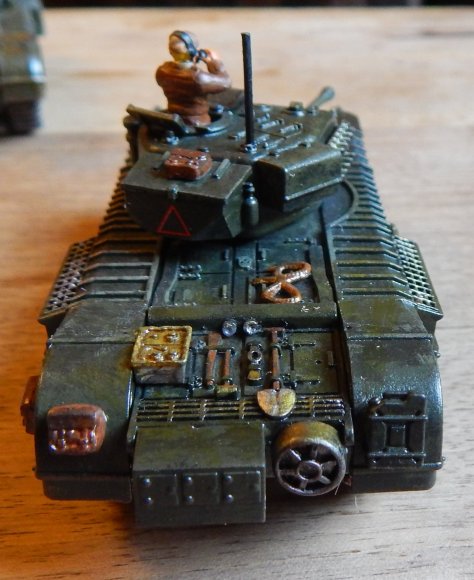As with any game, the more battles you get under your belt, the more ideas you have to improve the way it plays. The advantage of having a decent group of dedicated players is that you can alter the original rules of a game and invent some new “House Rules” for use when playing each other.
We have added a few simple ones already (e.g. the Germans did capture some Firefly tanks in Normandy after D-Day, so we have added a Firefly option to the “Looted Panzer” platoon available to a Normandy German grenadier force taken from Fortress Europe), but a number of larger issues also jumped out at us as benefitting from some sort of house rule;
- The destruction of buildings – there are no “official” rules covering what happens to a town or village that is hit by heavy fire.
- The chance that any anti-tank weapon could theoretically hit a viewport or similar and render a tank in-operational, however briefly.
- High trajectory can shoot over high features even if nothing can be seen on the other side, allowing for preliminary saturation bombardments etc.
So here are the rules we are playtesting to see if it is worth including them as House rules for our games. None are perfect and are either new suggestions or still being tested, if anyone chooses to try these out themselves, please let us know what you think.
Building destruction
All buildings are split into one of three categories;
- Normal buildings – these are the standard non-military buildings found everywhere; houses, shops, town halls etc. These have 3 Building Points (BP).
- Fortified buildings – structures that may have been designed to withstand attack but are not modern fortifications e.g. castles and some churches. These have 6 BP.
- Modern fortifications – Bunkers, gun emplacements etc. These obviously just use the standard rulebook rules.
Buildings may be damaged or destroyed by any weapon with a 5+ Firepower rating or better. Weapons with FP 6 cannot damage buildings, neither can weapons with the “No HE” attribute as the shells would pass straight through with no real damage caused.
Shooting at Normal and Fortified buildings is simple as they are not designed to be concealed (like a bunker). Any building is automatically hit if within 12″/30cm of the attacking unit. If over 12″/30cm but within the attackers normal range, single storey buildings are hit on a 3+ and multi-storey buildings on a 2+.
Artillery can may range in on a building, in which the ranging in roll is a 2+, modified as normal. If a building is covered by an artillery template at all then it is automatically hit.
If a building is hit, then then attacker makes an FP test – if successful the building loses 1BP (Breakthrough Guns deal 3 BP damage and therefore auto destroy a Normal Building). Bunker Busters automatically destroy any building they hit.
If a building is not destroyed in a single hit, then the occupants will have had a chance to escape when it becomes unstable. Any infantry may make it’s basic save (3+) in order to escape the building. Surviving units from a destroyed building are placed in base contact with the ruins.
All other building rules are as per the standard rulebook, such as division of rooms, occupation etc.
“Stunning” a tank
All anti-tank guns have a certain level of penetrative and explosive qualities no matter how light they are. Even if a gun has no chance to actually seriously damage a tank, a lucky shot can still shatter scopes, explode near ammo etc and generally cause the crew of even the most heavily armoured AFV to be worried.
Any weapon with an AT value is at least 6 and FP of 4+ or better will cause a glancing hit if the tank’s owner rolls a natural 1 on their saving throw.
As the shock is more likely to be psychological than physical, the crew has to take a motivation test or bail out, rather than the usual Firepower test.
Example: A Churchill Crocodile has Front Armour 13. A Pz IV H platoon (AT11) shoots a platoon of Crocodiles and scores 2 hits. The British player rolls 2 dice and gets 3 and a 1, 3+13 = 16 so one is saved, the natural 1 however signifies hitting a viewport, weld line etc and so causes a glancing hit. The British players a motivation test to see if the Crocodile bails out.
Artillery conducting indirect barrages
It seems odd that an artillery platoon cannot choose to target something it knows to be there or that may have been indicated by friendly aircraft or such to be present. The idea behind this rules is to remove the chance of the “sniping” Tiger where it hides behind a rock, pops out to shoot, Stormtrooper moves back behind the rock and then repeats ad infinitum.
Artillery platoons with a staff team may choose their Aiming Point to be a team that cannot be seen by any friendly model on the board, this represents aircraft reporting rough positions or trying to predict enemy movements. This kind of barrage is ranges in on a straight roll of 5+ and has no modifiers or re-rolls.
Artillery barrages conducted this way are inherently less accurate than those aimed at visible targets. This means that successful hit rolls must be rerolled. If the number of guns (or any other rule) causes the barrage to re-roll misses, then the two rules negate each other.
E.g a nine gun battery usually would either use a double width template and re-roll misses or use the devastating bombardment template. When aiming at a ground point, it either uses the devastating bombardment template and re-rolls hits, or it uses the double width template with no re-rolls of hits or misses.
